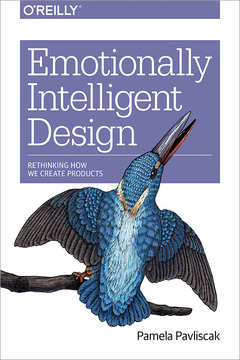Description
Designing for Happiness
Author: Pavliscak Pamela
Language: English
Subject for Designing for Happiness:
Approximative price 44.97 €
In Print (Delivery period: 12 days).
Add to cart200 p.
Description
/li>Readership
/li>Biography
/li>
As technology becomes deeply integrated into every aspect of our lives, we've begun to expect more emotionally intelligent interactions. But smartphones don't know if we're having a bad day, and cars couldn't care less about compassion. Technology is developing more IQ, but it still lacks EQ.
In this book, Pamela Pavliscak'design researcher and advisor to Fortune 500 companies'explores new research about emotion, new technology that engages emotion, and new emotional design practices. Drawing on her own research and the latest thinking in psychology, neuroscience, and behavioral economics, Pamela shows you how design can help promote emotional well-being.
You'll learn:
. How design has transformed emotion and how tech is
transforming it again
. New principles for merging emotional
intelligence and design thinking
. How to use a relationship model
for framing product interactions and personality
. Methods for
blending well-being interventions with design patterns
. How
emotional resonance can guide designers toward ethical futures
.
Implications of emotionally intelligent technology as it scales from
micro- to mega-emotional spheres
People working in technology, especially product managers, designers, business strategists, will read this book with great interest.
A number of approaches currently shaping technology—service design, calm technology, and behavioral design—move away from a problem focused, disease model to a possibility-driven, wellness model.
Pamela Pavliscak studies the future of feelings. Obsessed by our conflicted emotional relationship with technology, her work is part deep dive research, part data science, part design. As a researcher, she creates experiments that challenge us to see technology—and ourselves—in new ways. Whether documenting new internet emotions or asking people to confront their digital alter egos, Pamela’s research is aimed at understanding how technology can help us be human.
Pamela’s work with organizations like Google, IKEA, The New York Public Library, and Virgin draws designers, decision-makers, and community members into creative collaboration. She’s also co-founder of SoundingBox, a new online research platform. Her insights have appeared in The New York Times, the LA Times, NPR, Slate, CBC, and Quartz. She’s spoken at SXSW, TEDx, TNW, and Web Summit among many others. Currently, Pamela is on faculty at Pratt Institute where she teaches the next generation of tech designers.

